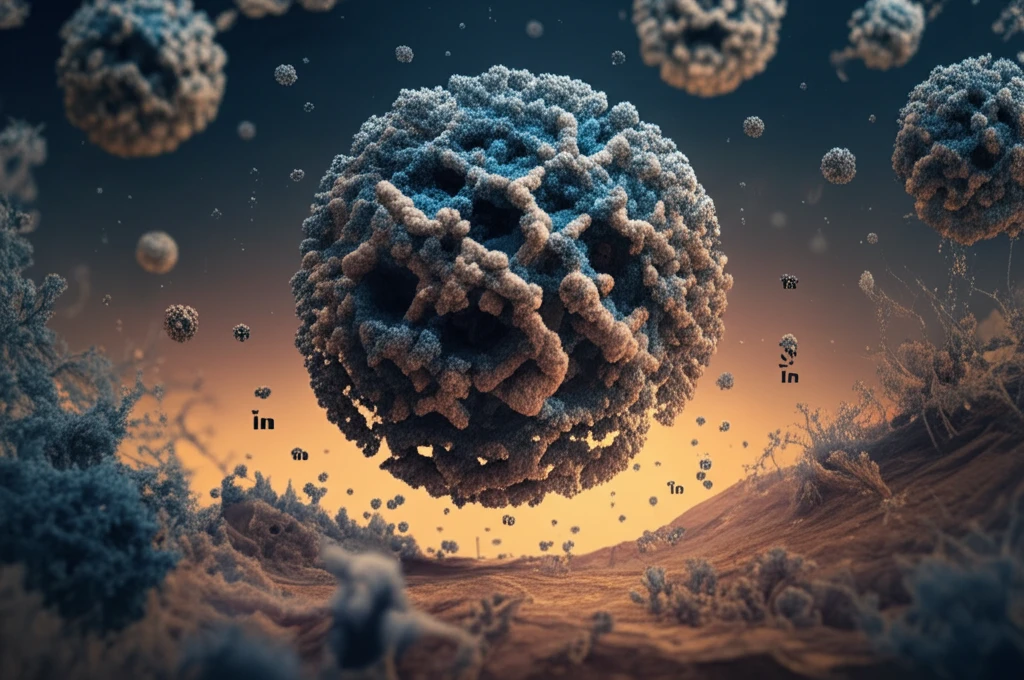
Unlocking the Secrets of Thorium Adsorption: A Sustainable Solution for Radioactive Waste?
"Discover how activated titanium hydroxide, derived from ilmenite concentrate, could revolutionize the way we tackle thorium contamination in water."
In an era defined by increasing environmental consciousness and the looming threat of radioactive contamination, the quest for effective and sustainable waste management solutions has never been more critical. Among the various radioactive elements, thorium, a naturally occurring radioactive metal, poses a significant challenge due to its presence in industrial waste and its potential impact on human health and ecosystems. Thorium, while having low direct toxicity, transforms into other radioactive products that pose serious risks.
Traditional methods of radioactive waste treatment, such as chemical precipitation, solvent extraction, and ion exchange, often come with limitations, including high costs, complex operational requirements, and the generation of secondary waste. Adsorption, on the other hand, stands out as an efficient and convenient alternative, offering cost-effectiveness, ease of operation, and minimal sludge production. This method involves using materials that can attract and bind thorium ions from contaminated water, effectively removing them from the environment.
Researchers have been exploring various adsorbents, including modified clays, carbon materials, biosorbents, and specialized resins, to capture thorium ions. Among these, titanium hydroxide has emerged as a promising candidate due to its high affinity for certain elements. This article explores the potential of activated titanium hydroxide, derived from Rosetta ilmenite concentrate, as a sustainable solution for thorium removal from contaminated water. We delve into the adsorption characteristics of this material, examining the factors that influence its effectiveness and the implications for radioactive waste management.
The Science Behind Thorium Adsorption with Activated Titanium Hydroxide

The study focuses on using titanium hydroxide, prepared from Rosetta ilmenite concentrate, to adsorb thorium (Th IV) from acidic water solutions. Ilmenite, a titanium-iron oxide mineral, is abundant in certain regions, making it a potentially cost-effective source for producing the adsorbent. The researchers activated the titanium hydroxide to enhance its adsorption capabilities. This involved treating it with sodium hydroxide (NaOH) to remove impurities and increase its surface area, followed by acid washing to prepare it for thorium capture.
- Fourier Transform Infrared (FT-IR) Spectroscopy: This method identifies the chemical bonds and functional groups present in the material. The FT-IR spectra confirmed the presence of hydroxyl (OH) groups on the titanium hydroxide surface, which are crucial for binding thorium ions.
- Thermogravimetric Analysis (TGA): This technique measures the weight change of the material as a function of temperature. TGA revealed the thermal stability of the titanium hydroxide and the removal of water molecules upon heating.
- Surface Area Analysis: The specific surface area of the activated titanium hydroxide was significantly higher than that of the raw ilmenite, indicating that the activation process greatly increased the available surface for adsorption.
A Sustainable Future with Innovative Adsorbents
The study demonstrates the potential of activated titanium hydroxide, derived from ilmenite concentrate, as an effective and sustainable adsorbent for thorium removal from aqueous solutions. Its high adsorption capacity, cost-effectiveness, and ease of preparation make it a promising candidate for treating radioactive waste and mitigating environmental contamination. Further research and development could optimize the performance of this material and explore its application in real-world scenarios, paving the way for a cleaner and safer future.
